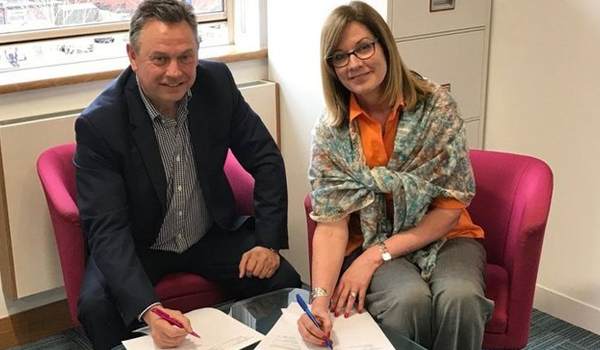Scotlands CSI goes CGI
Scotlands first dedicated forensic multimedia unit is set to revolutionise the way data and evidence relating to a crime can be used in court.

Scotlands first dedicated forensic multimedia unit is set to revolutionise the way data and evidence relating to a crime can be used in court.
CGI technology (computer-generated imagery) usually found in computer games and Hollywood movies is to be used to produce 3D reconstructions of complex and serious crime scenes for juries.
The Scottish Police Services Authority (SPSA) is establishing a £100,000 dedicated national forensic multimedia unit the first of its kind in Scotland which will revolutionise the way data and evidence relating to a crime can be used to support a police investigation or improve its presentation in court.
The technology, developed by two members of SPSA Forensic Services staff in Glasgow, has already been successfully used in several high-profile cases in recent years including the murder of Moira Jones in May 2008 by Marek Harcar, and in the trials of Peter Tobin for the murders of Polish student Angelika Kluk and schoolgirl Vicki Hamilton.
Forensic animation and 3D reconstruction can be used to aid a jury in visualising hard-to-explain situations. It paints a picture based on the forensic evidence collected and can then be used to illustrate how a murder was committed, the movements of a suspect, where a body was dumped or how vehicles might have collided.
Scale virtual models can even be created to show the location of evidence, bullet trajectories and deposition sites.
Tom Nelson, director SPSA Forensic Services, said: Exploiting new technology for the benefit of the criminal justice system is a fundamental part of an effective, modern forensic service.
SPSA Forensic Services operates from four locations Aberdeen, Dundee, Edinburgh and Glasgow supporting the casework of the eight Scottish police forces.
Through a variety of quality digital media, including interactive presentations and 3D reconstruction, the SPSA forensic multimedia unit can now present complex evidence types in a way that is clear, concise and easily understood, added Mr Nelson.
They say a picture is worth a 1,000 words and with this technology it really is. We can instantly transport detectives, lawyers, jurors and judges back to a crime scene, taking them on an interactive tour of the criminal investigation without a single person leaving their seat.
Digital media provides real benefits and efficiencies for the court in terms of the very best presentation of evidence, as well as reducing the need for lengthy description and testimony in court.
This is the first time that such a service has been integrated within the Scottish criminal justice system and I am delighted that SPSA has secured funding from the wider criminal justice community to provide it. I am confident that it will become an invaluable resource for both the police and the courts.
Frank Mulholland, Solicitor General said: Multimedia technology is becoming invaluable in helping prosecutors to explain complex scientific or technical evidence. Using the latest forensic animations can allow the prosecutor to present evidence, or a witness to explain evidence, in a way that allows jurors to better understand the evidence. It can also be useful as a substitute for photographs which are too distressing and horrific to show the jury.
Andy Mason, multimedia technician at SPSA Forensic Services, explained: As forensic experts, we often have to explain to people that our jobs are very different to the CSI programmes seen on television. This technology actually does look like some of the images and techniques shown in the dramas, but it still takes a huge amount of time and effort to produce. It doesnt happen at the touch of a button. But it does take out a lot of guess work for the jury.
It paints a clear picture. They dont have to imagine it, they dont have to guess it, and they dont have to piece it together. That can only be good for justice.
The CGI reconstructions can be used in a wide vari


